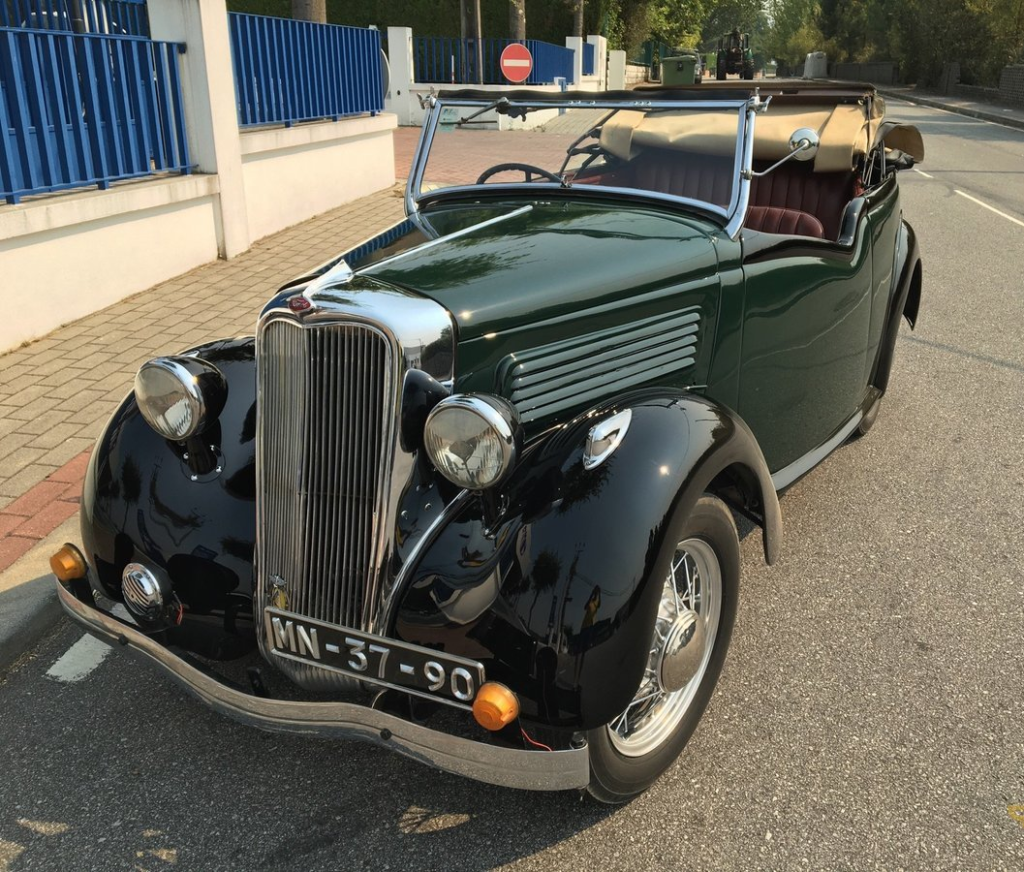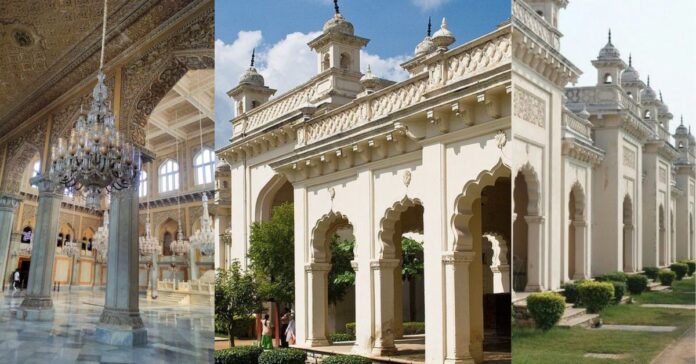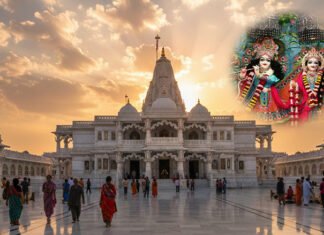Introduction
Nestled amidst the bustling lanes of Hyderabad history Old City lies the Chowmahalla Palace, a majestic monument whispering tales of a bygone era. about Chowmahalla palace translating to “Four Palaces” in Urdu, its name hints at the architectural marvel that awaits exploration. This blog post takes you on a comprehensive tour of the Chowmahalla Palace, delving into its rich history, architectural brilliance, and captivating legacy.
A Legacy Etched in Stone: A Historical Tapestry
The story of the Chowmahalla Palace is intricately woven with the rise and reign of the Asaf Jahi dynasty, the Nizams of Hyderabad. The construction of the palace, as it stands today, began in the late 18th century under the reign of Nizam Salabat Jung. oldest architecture However, its roots can be traced back even further, built upon the foundations of an earlier palace belonging to the Qutb Shahi dynasty. Over several decades, the palace complex expanded under the patronage of successive Nizams, culminating in the grand structure we see today.
The most significant contribution to the palace’s present form came from Nizam Afzal ad-Dawlah, Asaf Jah V, who oversaw its completion between 1857 and 1869. The palace served as the official residence of the Nizams and the seat of power for the Asaf Jahi dynasty until the mid-20th century. Within its opulent halls, the Nizams not only conducted court but also indulged in their refined tastes for art, culture, and scholarly pursuits.
A Fusion of Architectural Marvels: A Blend of Styles
The architectural style of the Chowmahalla Palace is a fascinating tapestry woven from diverse influences. The Nizams, known for their appreciation of aesthetics, incorporated elements of Persian, Rajasthani, Indo–Saracenic, Iranian personal, and even European styles into the palace design. This unique blend manifests in the intricate stucco work, the use of colorful tiles, the majestic arches, and the ornately carved doorways.
The palace complex is divided into two main courtyards – northern and southern. The southern courtyard considered the older section, houses the four palaces that lend the name “Chowmahalla” to the complex. These are the Afzal Mahal (meaning “Palace of Victory”), the Aftab Mahal (meaning “Sunlit Palace”), the Mahtab Mahal (meaning “Moonlit Palace”), and the Tahniyat Mahal (meaning “Congratulatory Palace”). Each palace boasts its distinct architectural character, reflecting the evolving tastes of the Nizams who commissioned them.
The northern courtyard, which has undergone extensive restoration, is open to the public and houses the impressive Bara Imam, a long audience hall. The centerpiece of this courtyard is the magnificent Khilwat (meaning “Seclusion”), also known as the Durbar Hall. This grand hall, once used for official ceremonies and receptions, is a true spectacle with its towering pillars, intricately mirrored ceiling, and ornate chandeliers.
Beyond the Walls: A Glimpse into the Opulent Life:
Stepping inside the Chowmahalla Palace is like stepping back in time. The meticulously restored halls transport visitors to an era of unimaginable wealth and opulence. The grand halls are adorned with exquisite furniture, intricately woven carpets, and priceless artifacts that belonged to the Nizams. The Sheesh Mahal (Palace of Mirrors) is a particular highlight, with its walls adorned with shimmering mirrors that create a mesmerizing kaleidoscopic effect.
Also Read : Ultimate Hyderabad History, Food, and Exciting Activities
The palace complex also houses the Clock Tower, a structure that speaks volumes about the Nizams’ fascination with technology. This tower houses the Khilwat Clock, a marvel of engineering that still functions perfectly to this day. The Nizam’s Museum, located within the complex, showcases a collection of royal artifacts, including weaponry, garments, jewelry, and manuscripts, offering a glimpse into the lives of the Nizams and the rich cultural heritage of Hyderabad.
A Legacy Preserved: A Beacon of Tourism
After the end of the Nizam’s rule in the mid-20th century, the Chowmahalla Palace remained the property of the royal family. In 2005, a new chapter began for the palace as it was opened to the public as a museum. This decision allowed visitors to experience the grandeur of the Nizami era and ensured the preservation of this historical and architectural marvel.
Today, the Chowmahalla Palace is a popular tourist destination in Hyderabad. Visitors can explore the various palaces, marvel at the architectural details, and gain insights into the fascinating history of the Asaf Jahi dynasty. The palace complex also comes alive with cultural events, exhibitions, and the annual Chowmahalla Music and Dance Festival, keeping the legacy of the Nizams alive for future
Unveiling Chowmahalla Weapons and Vintage Cars:
The grandeur of the Chowmahalla Palace extends beyond its opulent architecture and rich history. Within its walls lie fascinating stories waiting to be unearthed, including those whispered by the weapons and vintage cars housed in the palace complex. Let’s delve deeper into these captivating elements that add another layer to the Chowmahalla experience for tourists.
Armory of the Asaf Jahis: A Legacy of Might
The Nizams of Hyderabad were not just patrons of art and culture; they were also astute rulers who commanded a powerful army. The Chowmahalla Palace, their seat of power, housed an impressive armory that showcased their military might. While these weapons are not currently on public display, historical records and descriptions offer a glimpse into this fascinating collection.
Also Read: Charminar: A Symbol of Hyderabad’s Rich Culture and History
The Nizams’ arsenal boasted an array of weaponry, both sourced from across the subcontinent and crafted by skilled local artisans. Imagine swords like the Shamsheer (known for its curved blade), the Talwar (a single-edged weapon), and the ceremonial Abbasi sword, a personal favorite of the Nizams. Fierce warriors would have wielded Dhups (axes), Sosun-pattas (daggers), and Sirohi (spears), a testament to the Nizams’ formidable defense capabilities.
Beyond the Battlefield: Ceremonial Grandeur
The armory wasn’t solely about war; it also reflected the Nizams’ love for ornate craftsmanship. Several weapons in the collection were ceremonial pieces, meant to be displayed on special occasions. These weapons were often adorned with precious stones, intricate engravings, and goldwork, transforming them into works of art as much as instruments of war.
A Legacy for the Future: Exploring the Possibilities
While the historic weapons are not currently on public display, vintage cars there’s potential for future exhibitions. A curated display showcasing replicas or carefully selected originals could be a fascinating addition to the Chowmahalla Palace experience. Imagine tourists marveling at the craftsmanship of these weapons, learning about the Nizams‘ military prowess, and gaining a deeper understanding of the region’s history.
A Ride Through Time: The Vintage Car Collection

The Chowmahalla Palace doesn’t just boast weapons that speak of power; it also houses a collection of vintage cars that transport visitors to a bygone era of luxury. These automobiles, unlike the weapons, are on display for all to see, classic cars adding a touch of nostalgia and grandeur to the palace tour.

The Nizams were known for their love of all things luxurious, and their collection of cars reflects this. Visitors can admire the sleek lines of a 1912 Rolls-Royce Silver Ghost, a symbol of automotive excellence in its time. Other notable vehicles include a Ford Tourer from 1934, a Buick convertible, and a classic Fiat. Each car tells a story of the Nizams‘ refined tastes and their desire to stay ahead of the curve.
Classic Cars Interactive Displays and Themed Tours
The presence of vintage cars presents a unique opportunity to enhance the tourist experience at the Chowmahalla Palace. Interactive displays could provide information about the history and significance of each car. Imagine visitors getting a closer look at the engines, learning about the challenges of early automobiles, or even taking a virtual reality tour of a bygone road trip in a vintage car.

Also Read: The Ultimate Guide to Visiting Tank Bund Hyderabad
Themed tours that combine vintage cars with the palace’s architecture and history could also be a popular attraction. Tourists could embark on a journey through time, starting with the weapons that symbolized the Nizams’ power and culminating in a ride (virtually or perhaps even a short ride outside the palace complex) in one of their luxurious automobiles.
By incorporating the palace’s weapons and vintage cars into the tourist experience, Chowmahalla can offer a more well-rounded and captivating journey into the past. These elements add layers of intrigue, showcasing not just the opulence but also the strength and evolution of the Asaf Jahi dynasty. So, on your next visit to Chowmahalla Palace, don’t just be mesmerized by the architectural splendor; keep an eye out for the stories waiting to be told by the weapons and vintage cars, remnants of a bygone era of power and luxury.
Chowmahalla Palace Address:
20-4-236, Moti Galli Rd, Khilwat, Hyderabad, Telangana 500002
Chowmahalla Palace Entry Fee:
| Category | Ticket Prices |
|---|---|
| Adult (Indian) | INR 100 |
| Child (Below 10 Years, Indian) | INR 40 |
| Foreign Tourist | INR 400 |
| Still Camera | INR 50 |
| Video Camera | INR 200 |
Chowmahalla Palace Timings:
| Timings | 10 am – 5 pm every day (Closed on Fridays) |
Frequently Asked Questions:
Answer: Chowmahalla Palace is a significant historical monument that served as the official residence of the Nizams of Hyderabad. Its construction began in the late 18th century under Nizam Salabat Jung and was completed between 1857 and 1869 by Nizam Afzal ad-Dawlah, Asaf Jah V. The palace was the seat of power for the Asaf Jahi dynasty and is an architectural marvel that showcases the grandeur and refined tastes of the Nizams.
Answer: The architecture of Chowmahalla Palace is a blend of various styles, including Persian, Rajasthani, Indo-Saracenic, Iranian, and European influences. This eclectic mix is evident in its intricate stucco work, colorful tiles, majestic arches, and ornately carved doorways. The palace complex is divided into two main courtyards, each featuring distinct architectural elements and structures.
Answer: Key attractions of the Chowmahalla Palace include the four palaces in the southern courtyard (Afzal Mahal, Aftab Mahal, Mahtab Mahal, and Tahniyat Mahal), the Bara Imam, and the Khilwat or Durbar Hall. The complex also features the Sheesh Mahal (Palace of Mirrors), the Clock Tower with the Khilwat Clock, and the Nizam’s Museum, which houses royal artifacts such as weaponry, garments, jewelry, and manuscripts.
Answer: Yes, the Chowmahalla Palace houses several notable collections and exhibitions. The Nizam’s Museum showcases a collection of royal artifacts, including weapons, garments, jewelry, and manuscripts. Additionally, there is a collection of vintage cars, including a 1912 Rolls-Royce Silver Ghost, a Ford Tourer from 1934, a Buick convertible, and a classic Fiat, which are on display for visitors to admire.
Answer: Chowmahalla Palace is open to visitors from 10 am to 5 pm every day, except on Fridays when it is closed. The ticket prices are as follows:
1. 100 INR per adult for Indian visitors
2. 40 INR per child (below 10 years) for Indian visitors
3. 400 INR per person for foreign tourists
4. 50 INR for a still camera
5. 200 INR for a video camera
Visitors are encouraged to check the official website or contact the palace directly for the most current information on timings and ticket prices.











